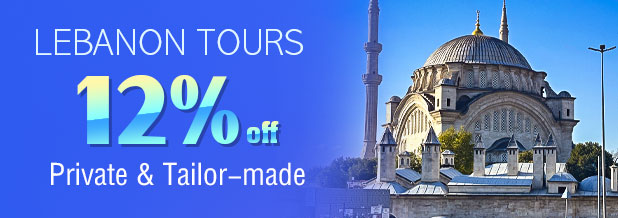Top 8 Things to Do in Lebanon
As one of the most westernized country in Middle East, Lebanon is characterized by its historical depth. Every attraction in the country is like a history book which is waiting for you to read and explore.
1. Visit Anjar Ruins in Beirut
Located about 58 kilometers (36 miles) east of the capital city, Anjar, built at the beginning of the 8th century, is the palace ruins of Umayyad Caliphate and was listed as a UNESCO World Heritage site in 1984. It is a square city where the remains of ancient city wall, main streets, shops and palaces can be recognized. The ruins show an orderly layout, reminding tourists of the city in ancient times. It is a unique testimony of city planning under the regime of Umayyad.2. Byblos, Beirut
Situated about 40 kilometers (25 miles) north of Beirut, Byblos is one of the earliest human settlements. The city has been continuously inhabited since 5000 BC, therefore cultures of different periods and races like the Bronze Age, Byzantine Period, Phoenicians, and Romans are integrated here. Meanwhile, it is a natural harbor and cradle of Mediterranean civilizations. It was listed as a UNESCO World Heritage site in 1984.3. Visit National Museum of Beirut
Built in 1937, it is an important museum of archaeology in the country, owning more than 100,000 collections from prehistoric times to the Mamluk Period. The representative exhibitions in the museum are the stone coffin of King Ahiram, the Statue of Hygieia, the Seven Wise Men Mosaic and the Phoenician alphabet. Many statues and gems are also on exhibit.4. Beiteddine Palace, Beirut
Located about 45 kilometers (28 miles) south of Beirut, Beiteddine Palace is one of the architectural treasures in Lebanon. Emir Bashir Shihab II had it built in the period between 1788 and 1818 as a summer palace. The palace complex is composed of three palaces which respectively served as recreational, official and residential areas. It is full of Lebanese style with appealing design and exquisite carvings.5. Jeita Grotto, Beirut
Located at the bottom of the Mount Lebanon, about 20 kilometers (12 miles) north of the capital, the Jeita Grotto is a karst cave with the top part being more than 80 meters (262 feet) from the ground. The grotto is divided into upper and lower caves which have been formed over millions of years. In upper cave, domal landscape resembling Roman church domes can be seen. The lower cave is traversed by an underground river. The caves are cool in summer and the lower cave is closed in winter.6. Qadisha Valley, Beirut
Located at the foot of Mount al-Makmal, Qadisha Valley, also called Holy Valley, is a land of idyllic beauty, where the Kadisha River flows at the bottom. The cedars in the valley, usually used as precious building materials, are survivors from the ancient time. This valley is also an important site of early Christian monastic settlements. Many monasteries are survived and become the example of early Christian architecture.7. Tyre, Beirut
Locate about 80 kilometers (50 miles) south of Beirut, Tyre is a ancient city which has been listed as a UNESCO World Heritage site in 1984. In the Roman Period, Tyre was well-known for purple dye extracted from shells. Now, the ancient city is in ruins because of the rise and fall of dynasties, but the arenas and arches of the Roman Period can be found. The most famous reserved monument is hippodrome.8. Baalbek, Bekaa Valley
Baalbek is a city meaning “City of Sunshine”, which was built in the Anti-Lebanon foothills. The city is famous for historical sites left by the Roman Period. The world’s most complete Roman temples are well preserved here, such as the Temple of Jupiter, the Temple of Bacchus and the Temple of Venus. The temple complex in the city has been listed as a UNESCO World Heritage site in 1984. The grand structure is regarded as an example of Roman architectures.Delicious food
Chicken, mutton and vegetables are favored by Lebanese and the most important feature of the local dishes is pureness. All ingredients including seasoners should be fresh. In order to taste the tenderest meat, Lebanese love to eat raw mutton. The typical dishes are Hummus and pita bread, Kibbeh nayyeh, and Manaeesh. Lebanese sweets are also well-known, such as Baklava, Ma'amoul and Sfouf (almond-semolina cake), but they are too sweet. You can eat dessert with Arabian black tea. Arak is national drink of the country, which is an anise-flavored wine.Recreational Activities
Because of the special climate and terrain, Lebanon is the only country in the world that you can ski in the morning and swim in the Mediterranean in the afternoon. Skiing is a popular activity among the tourists.
You May Like:
Is Lebanon Safe? Read the 10 Tips on Travel Safety

